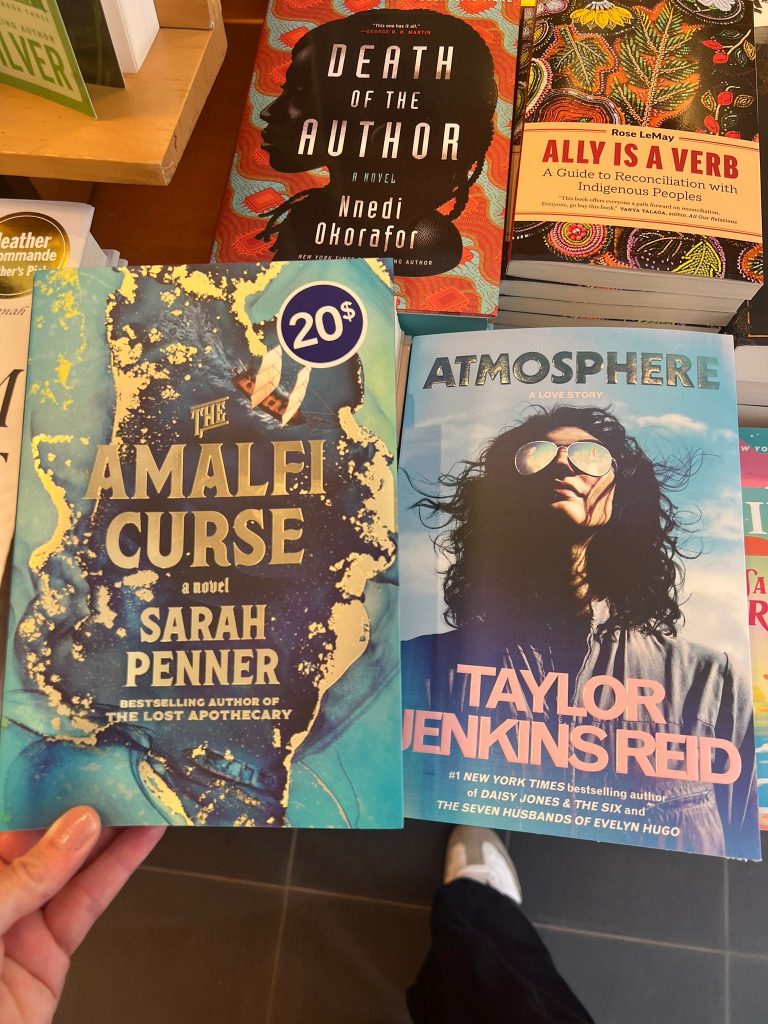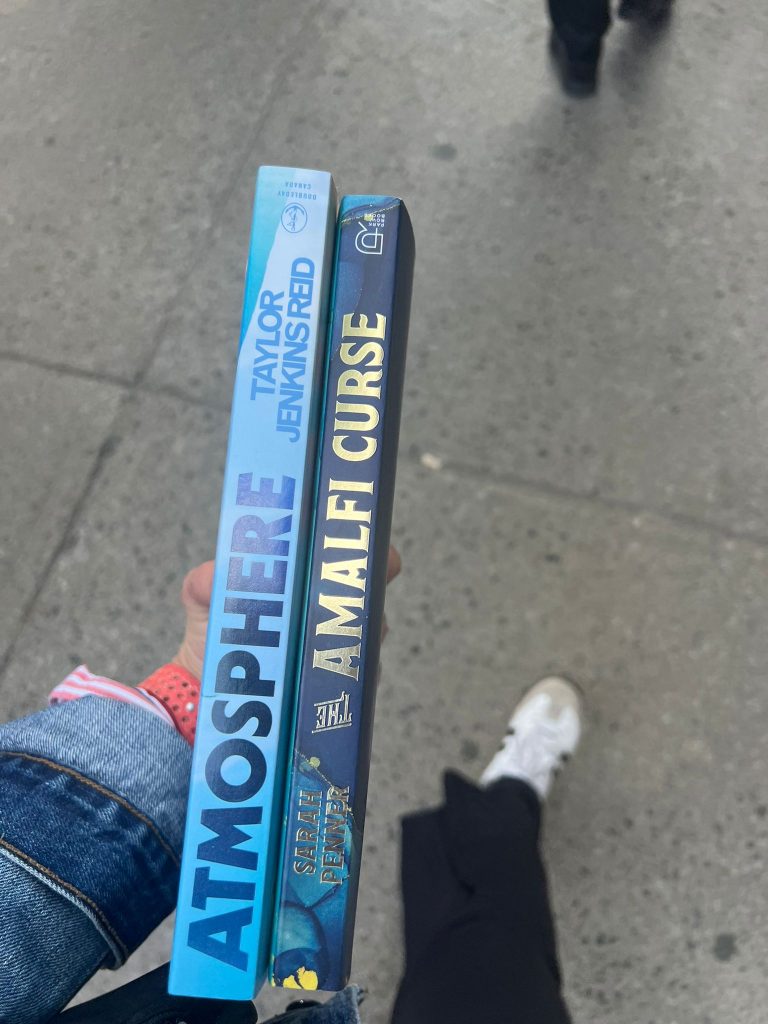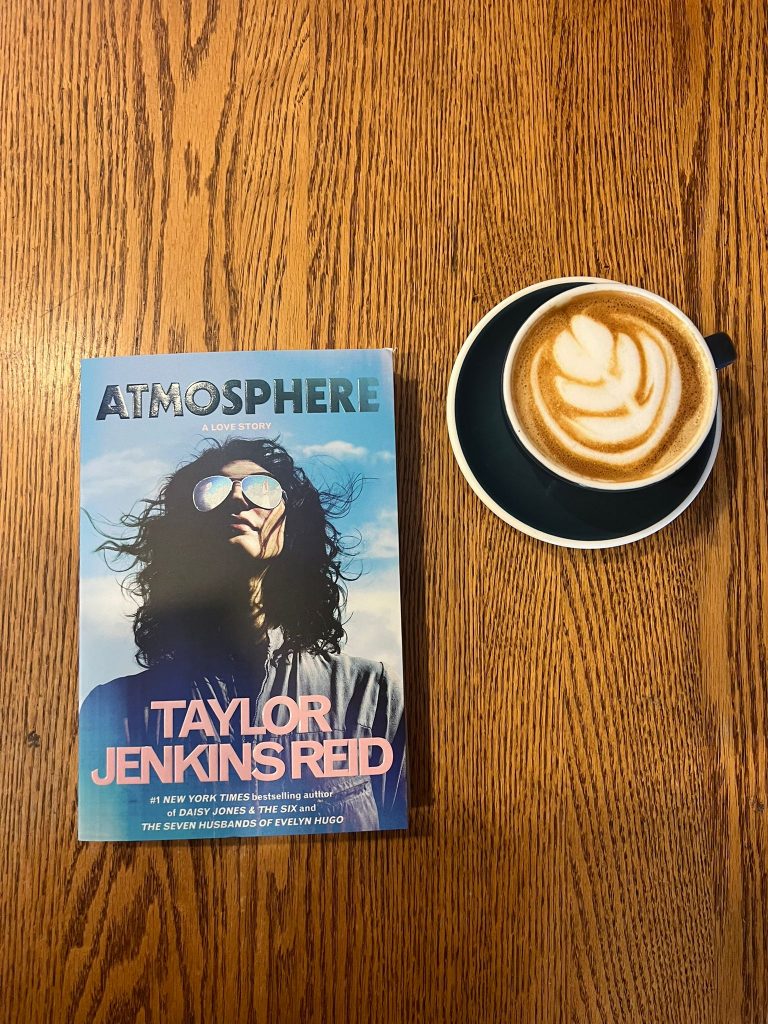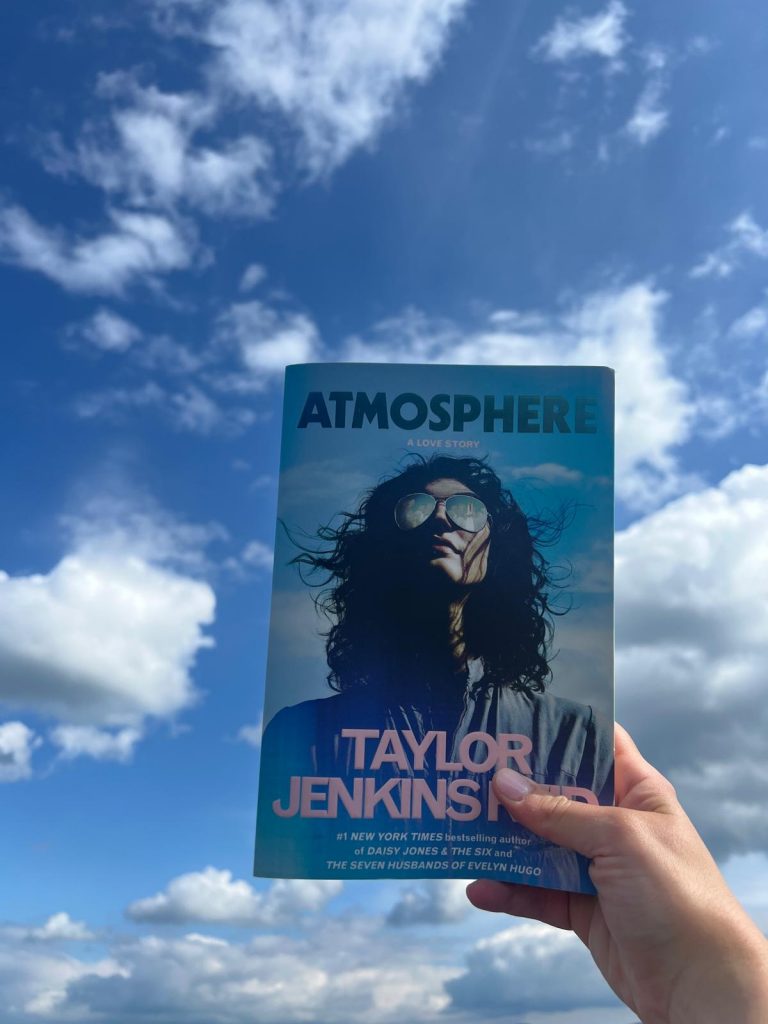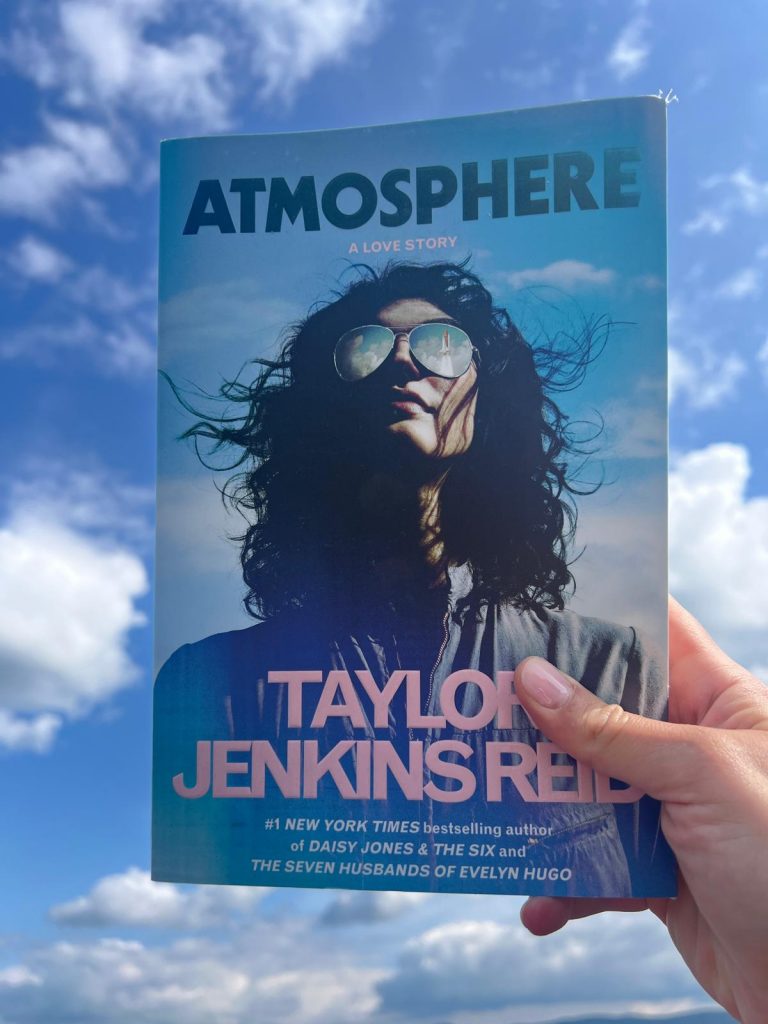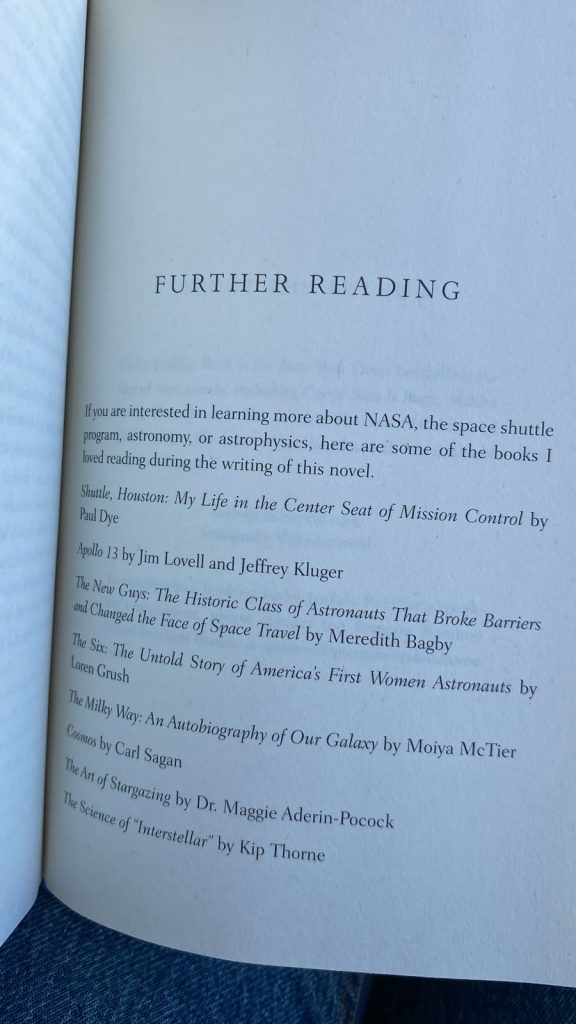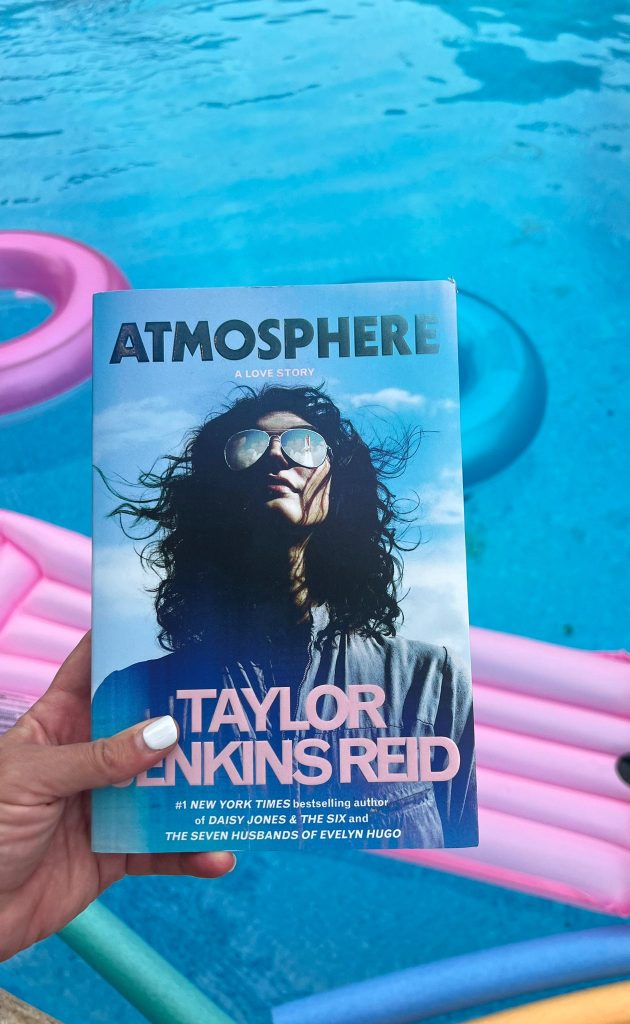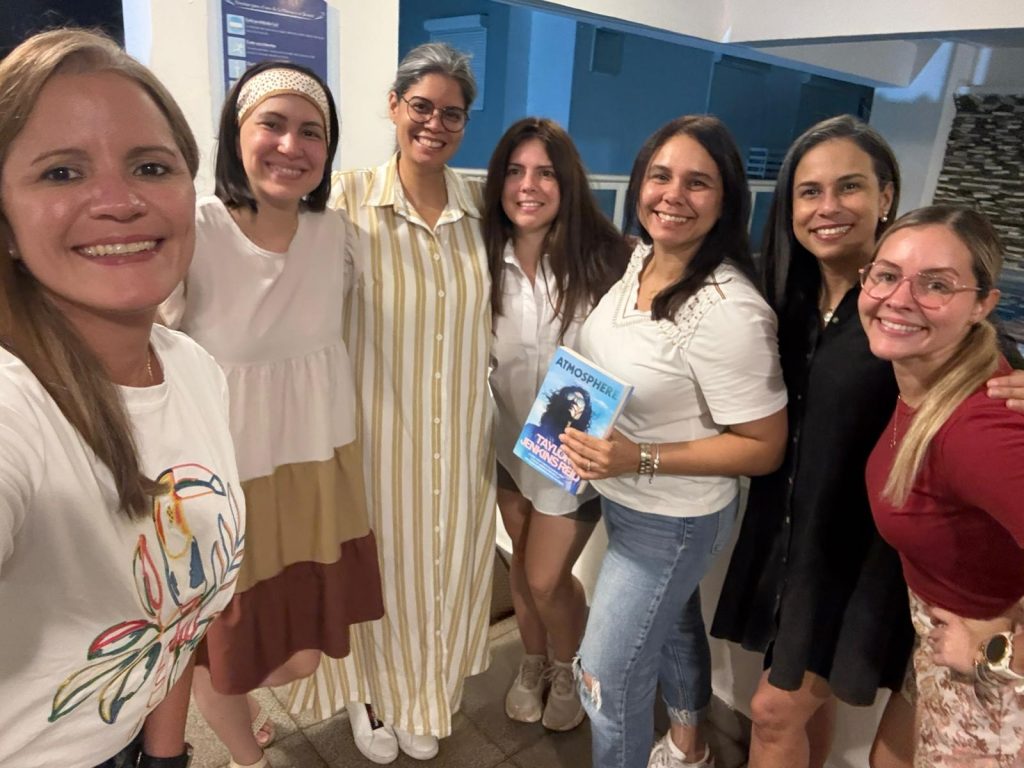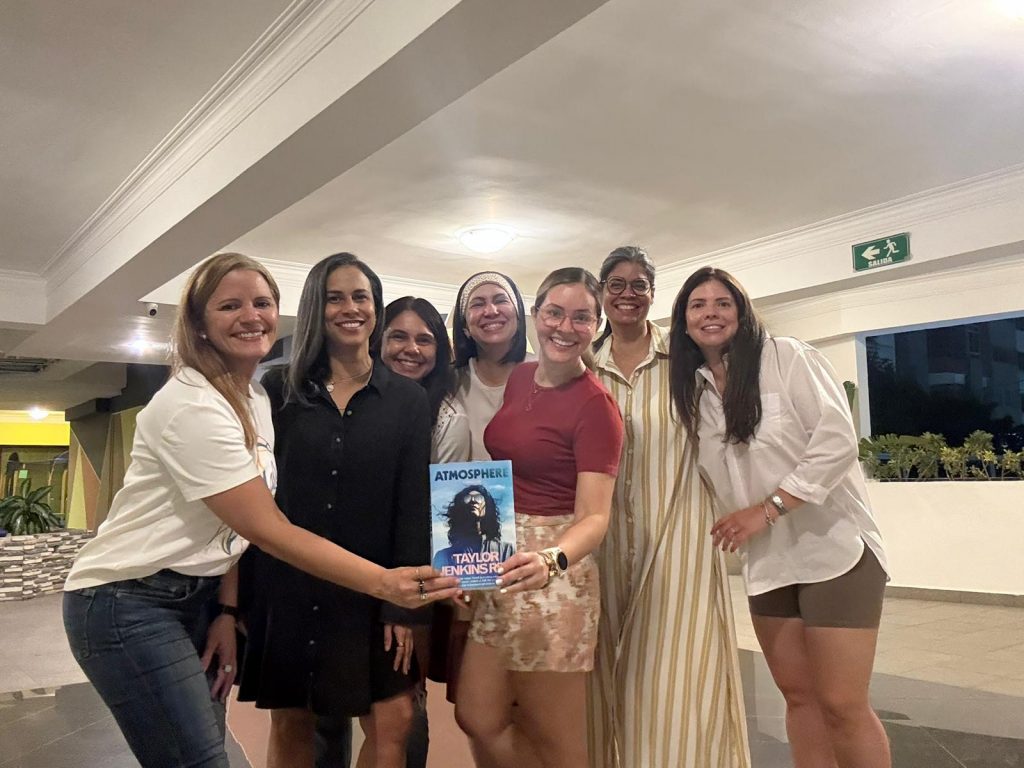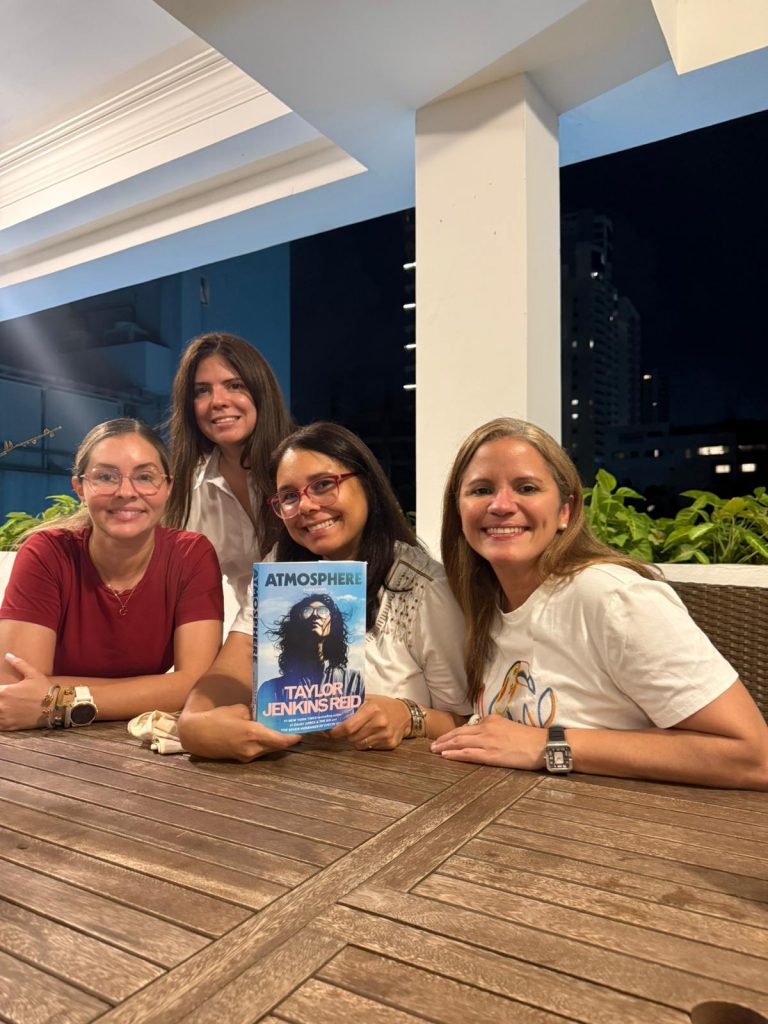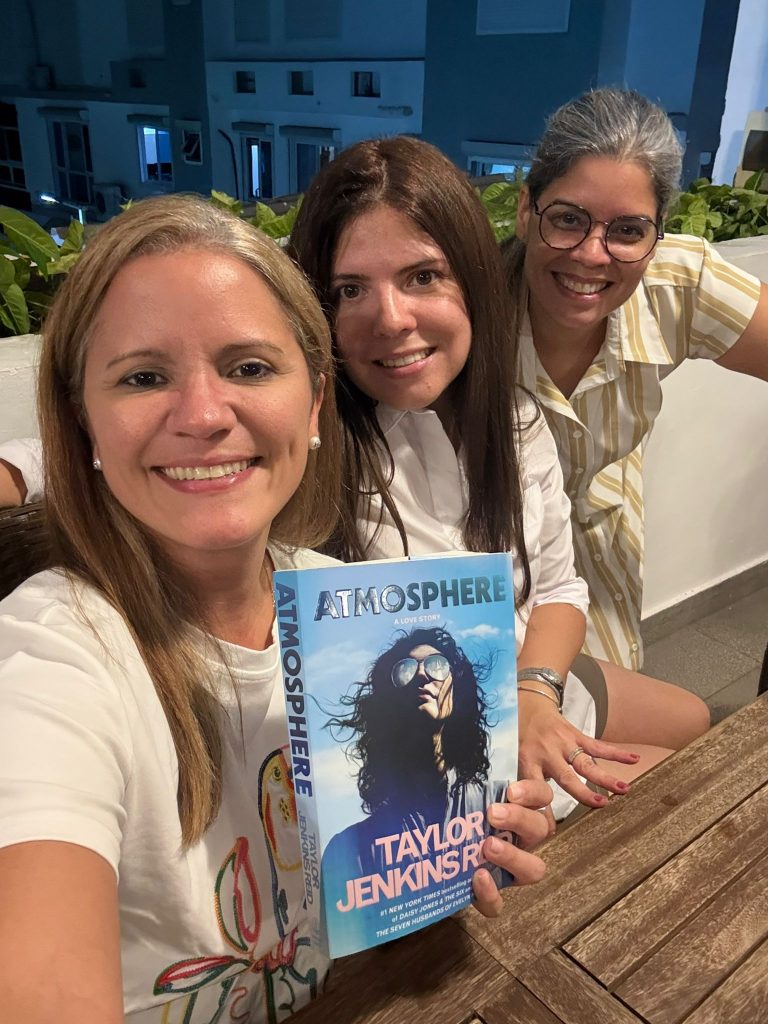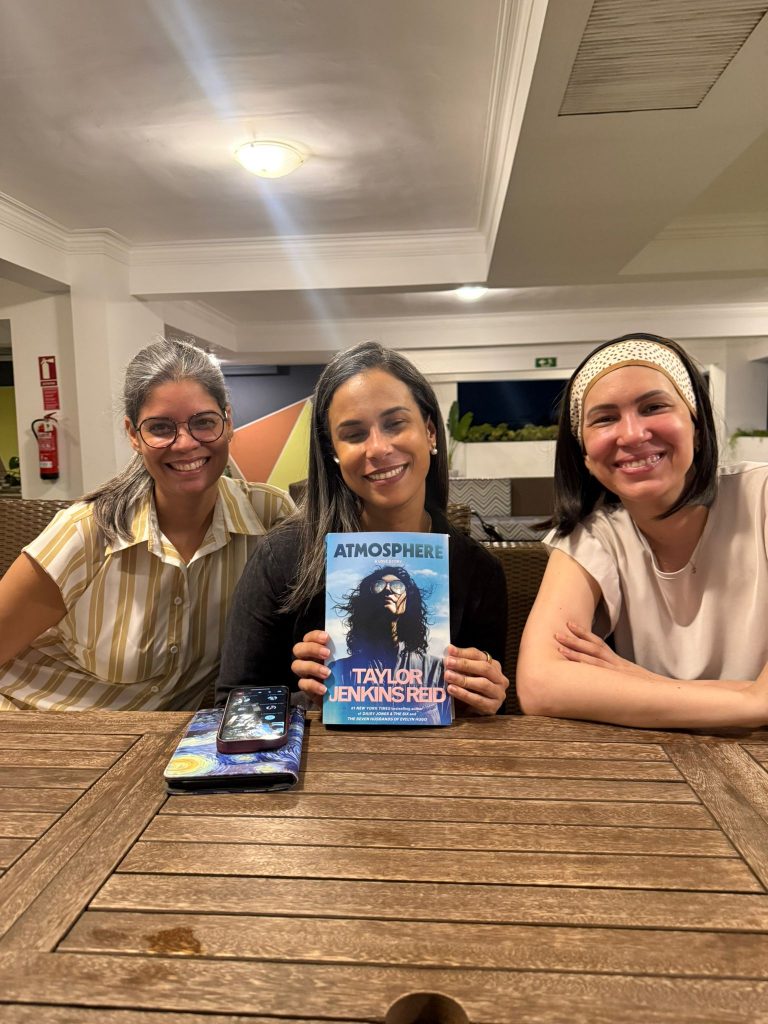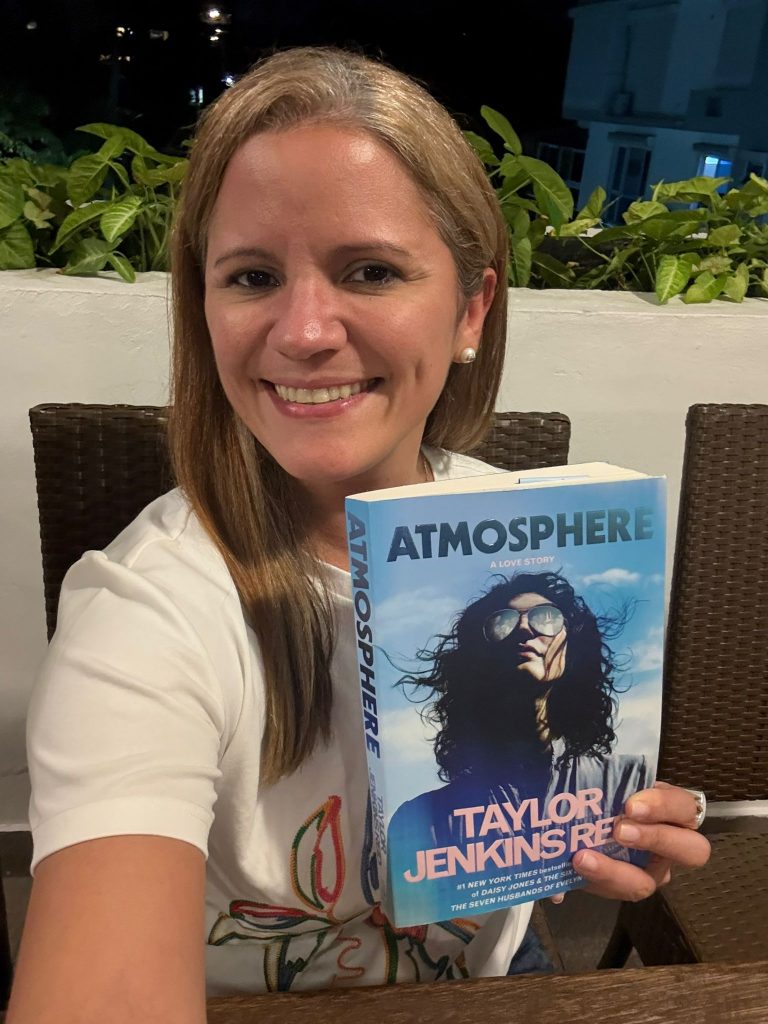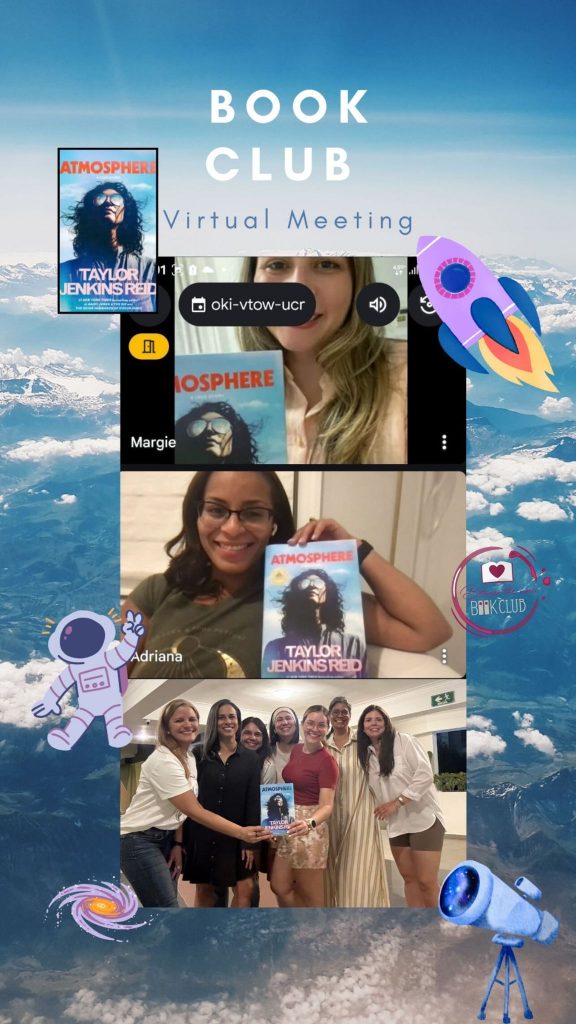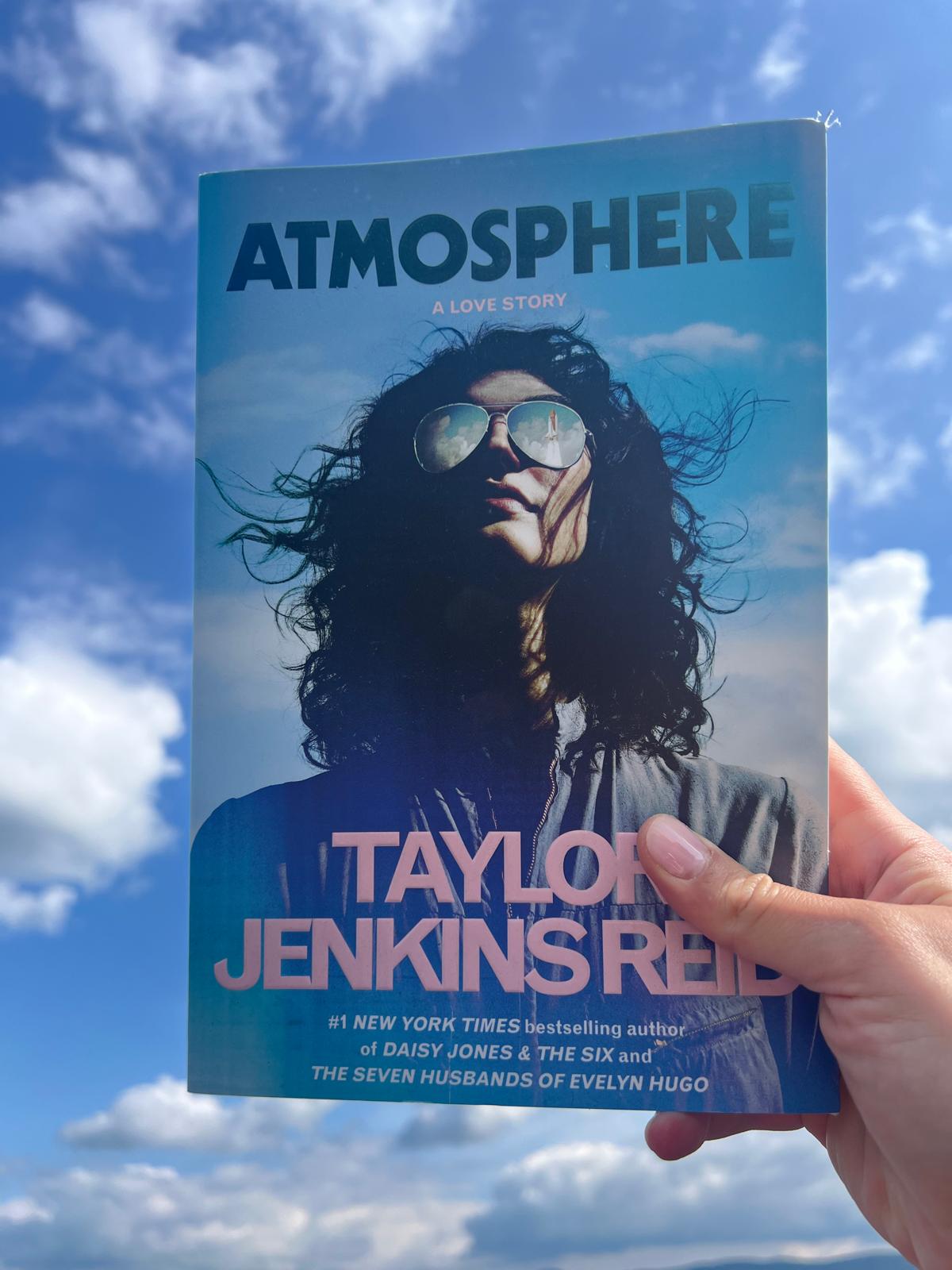
Atmosphere: A Love Story by Taylor Jenkins Reid
About the book:
Atmosphere is a gripping historical fiction romance set in 1980s NASA. The story follows Joan Goodwin, a reserved astrophysics professor who becomes one of the first female astronauts during the space shuttle era. As she undergoes intense training at NASA’s Johnson Space Center and navigates friendship, family, and love—particularly with fellow astronaut Vanessa Ford—the novel masterfully blends emotional depth with high-stakes space drama, culminating in a space shuttle crisis that tests everything they’ve built.
Plot Summary
On December 29, 1984, NASA astronaut Joan Goodwin is working in Mission Control when the shuttle Navigator is damaged and one crew member is critically injured. The crew includes her friends and fellow astronauts: Griff Griffin, Lydia Danes, Hank Redman, and Vanessa Ford. While on a spacewalk, Vanessa and Griff are caught in a satellite explosion that kills Hank and a mentor, Steve, and leaves Griff and Lydia unconscious. Vanessa is the only one left to reenter the Earth’s atmosphere.
Training and a Secret Relationship
The story flashes back to seven years earlier, when NASA first opens astronaut applications to women. Joan, an astronomer, applies and is accepted in 1980. She trains with her group, which includes Griff, Hank, Vanessa, Lydia, and Donna Fitzgerald. While she grows close with Vanessa, Lydia remains competitive and aloof. The astronaut candidates must navigate the sexism of their male peers, including a pilot named Jimmy Hayman.
During her training, Joan realizes she has feelings for Vanessa, and the two begin a secret romantic relationship, fearing that being outed would ruin their careers. They become official astronauts and work support roles for early shuttle missions.
A Promise and a Crisis
While Joan’s career is on the rise, her relationship with her sister, Barbara, begins to deteriorate. Barbara, a single mother, becomes increasingly neglectful of her daughter, Frances. When Barbara sends Frances to boarding school, Joan confronts her, and Barbara agrees to let Joan take care of Frances forever.
In 1983, Joan is selected for a mission. Her relationship with Vanessa settles into a comfortable rhythm. Just before Vanessa’s own mission in December 1984, Joan learns that they have been outed to their superiors. Fearing for Vanessa’s career, Joan tries to end their relationship, but Vanessa insists that being with her is more important than her career.
Back in the present, Vanessa is on the Navigator, struggling to reenter the atmosphere. Mission Control orders her to fix the shuttle’s latches, which were damaged in the explosion, but doing so would mean losing her deorbit window and allowing the unconscious Lydia to die. Defying orders, Vanessa risks re-entry. After a moment of panicked silence in Mission Control, Vanessa announces that she has landed safely with Lydia still alive.
Fun Facts
The novel was Good Morning America’s June 2025 Book Club pick — fitting for a summer full of cosmic wonder.
Taylor Jenkins Reid dove deep into NASA’s world—touring mission control, studying archival documents, and even collaborating with real astronauts and NASA engineers to bring authenticity to the story.
She spoke about her personal connection to the novel’s queer romance, drawing from her own experiences and recent coming-out moment.
How Atmosphere Relates to Reid’s Other Books
Taylor Jenkins Reid is beloved for portraits of fierce women carving their place in male-dominated spheres. From Hollywood’s glare (The Seven Husbands of Evelyn Hugo) to the tennis court (Carrie Soto Is Back) and fame’s backstage (Daisy Jones & The Six), Atmosphere continues this tradition—landing her protagonists in the final frontier of space. That shift in setting underscores her growth; as a reviewer noted, Reid “pushes herself into new territory both technically and thematically.
If you love Atmosphere, these bestselling reads are next-level emotional journeys:
Daisy Jones & The Six
The Seven Husbands of Evelyn Hugo
Malibu Rising
Carrie Soto Is Back
Drink Pairings for Atmosphere
Set the mood with these space–inspired sips:
Cosmic Stardust Martini – Sparkling gin cocktail with lemon zest and edible glitter to reflect stars in the night.

- Earl Grey Smoke – A soothing hot tea with a hint of smoked vanilla, balancing tension and emotionality.
Dark Matter Espresso – Doppio with a swirl of black sugar syrup—bold, intense, unforgettable.
Themes
Navigating Gender and Sexuality Discrimination
The novel extensively explores the systemic discrimination women, and particularly queer women, face in the workplace and society, and the varied strategies they employ to navigate it.
Gender Discrimination at NASA and Academia: Joan encounters casual gender discrimination and sexist stereotypes in her Physics and Astronomy department at Rice University, where male colleagues dismiss her accomplishments and doubt that NASA would hire a woman scientist. At NASA, the system tacitly excludes women from significant roles, such as piloting the shuttle, which Vanessa constantly pushes against. Male candidates, like Jimmy Hayman, perpetuate sexist attitudes.
Sexuality Discrimination: Joan and Vanessa face severe sexuality discrimination that would put their careers and social standing at risk. The pervasive anti-gay bias in 1980s U.S. culture, legally codified and socially reinforced, forces them to hide their relationship, as even the appearance of “sexual deviation” could lead to loss of employment.
Diverse Resistance Strategies: The women of Group 9 employ diverse strategies:
Confrontation (Vanessa): Vanessa takes an active, aggressive approach, constantly pushing back against sexist rules and defying administration threats to her career.
Passive Resistance (Joan): Joan struggles with confrontation, often retreating into silence in the face of workplace problems or her own feelings.
Accommodation (Lydia/Donna): Lydia and Donna tolerate harassment and choose to “play by the men’s rules,” believing it’s the only way to succeed.
Narrative Value: The narrative ultimately rewards the confrontational approach, arguing that standing up against discrimination is the best option, aligning with Vanessa’s eventual success and Joan’s emotional growth.
The Relationship Between Ambition and Sacrifice
The novel examines the complex interplay between personal ambition and the sacrifices required to realize it, showing that ambition can be both noble and destructive.
Noble Sacrifices: Joan and Vanessa’s shared ambition to be astronauts (fueled by Joan’s passion for the stars and Vanessa’s for flight) is portrayed as noble. Their journey requires sacrificing time with family, personal well-being, and often tolerating discrimination. Crucially, they know the risks of spaceflight—the ultimate sacrifice of their lives—is worth the chance to contribute to history.
Detrimental Ambition (Barbara): The cruelest ambition is seen in Joan’s sister, Barbara. Her ambition for a comfortable life as a wealthy suburban housewife causes her to sacrifice her daughter Frances’s happiness and security, culminating in her willingly relinquishing custody. This highlights that not all sacrifices are noble.
Love as the Ultimate Value: The narrative argues that love and belonging are the most valuable ambitions, worth any sacrifice. Joan initially tries to sacrifice her relationship with Vanessa for Vanessa’s career, but Vanessa corrects her, insisting that her life with Joan is more valuable than her chance to fly the shuttle. This reinforces the theme that love, familial or romantic, precedes all else.
The Need for Love and Belonging
Joan’s search for love and belonging is a universal human experience that pervades the novel, extending beyond romantic love to familial connection and kinship.
Universal Kinship: Joan’s philosophy, symbolized by the stars, asserts a kinship that extends to all humanity. She sees the stars as proof of both a social/cultural connection across human history and a concrete scientific connection because all matter shares the same basic elements.
Found Family: Joan finds a sense of belonging at NASA, creating a “found family” among her fellow astronaut candidates. This community gives her the sense of home she lacked in her biological family. This value is reinforced when Joan brings Frances into her life, vowing to make sure her niece never again feels “unsure of where she belong[s],” and even sacrifices a second space mission to avoid leaving Frances.
Romantic Right: Joan’s emotional arc centers on her romantic love for Vanessa. Once she recognizes her same-sex desire (which she suppressed due to 1980s societal discrimination), she realizes her deepest desire is for the “right to exist and to love and be proud and happy,” arguing that the need for love is universal and should be legally protected regardless of sexual orientation.
Book Club Questions
How does Joan’s ambition shape her identity throughout the book?
In what moments did you feel the weight of sexism at NASA?
Describe Joan’s bond with her sister Barbara—how does it evolve?
What does her relationship with niece Frances reveal about Joan’s emotional journey?
How would you compare the women’s different responses to a male-dominated environment?
How did the dual timelines enhance suspense?
Do you think the technical aspects (space jargon, mission control) grounded or overwhelmed the story?
Why might Barnie be seen as a “delayed coming-of-age” for Joan?
At what point did the romance with Vanessa become inevitable?
Do you think they’d still have to hide their relationship if the story was set today?
Describe a mission control character who stood out to you—why?
How did the shuttle disaster shift how you viewed everything that came before it?
What does bravery versus courage mean—especially in that defining quote from Vanessa? SoBrief
How did the night sky imagery deepen the emotional resonance?
What did the space shuttle symbolize to Joan—and to you?
Which secondary character deserves their own story?
Joan’s dream looked different than expected—have you ever felt that?
What made Vanessa such a compelling counterpart to Joan?
How did the sober tone reshape your expectations of a typical love story?
Discuss the book’s ending—what does it leave unanswered?
What might Joan and Frances’s life look like five years later?
What book-loving astronaut would you cast for Joan and Vanessa?
Sum up Atmosphere in five words or a single tweet.
What surprised you most about this novel compared to Reid’s previous books?
What would you ask Taylor Jenkins Reid about her research—or her courage?
Book Club Games & Trivia
Mission Timeline Scramble: Write key events on notecards and have teams reconstruct the timeline.
Astronauts & Allies: Create flashcards with unique characteristics of crew members; test who remembers which is who.
Space or Metaphor? Group discerns if statements are literal mission details or poetic metaphors from the novel.
Cast the Crew: Pick famous or underappreciated actors to play each character.
Spotify Playlist Essentials
“Space Song” – Beach House – dreamy and cosmic
“Come Sail Away” – Styx – adventurous and emotional
“Starman” – David Bowie – hopeful longing
“Saturn” – Sleeping At Last – melancholic beauty
“Heroes” – David Bowie – endurance and romance
Character Analysis
Joan Goodwin
Joan is the novel’s main character who tells most of the story. She starts as an astronomer and professor at Rice University and later becomes an astronaut candidate when NASA begins accepting women in 1981. Originally from California, she moved to Houston after earning her PhD to be near her sister, Barbara. Besides being a skilled scientist, Joan is also a classically trained pianist and an amateur artist, though she often downplays her abilities because she feels less attractive than Barbara. She is not interested in romance at first but changes when she falls in love with Vanessa. Joan believes that the universe and science are connected to something greater, finding comfort and responsibility in the stars. Joining NASA helps her discover a new purpose, her own sexuality, and a sense of belonging with her colleagues.
Source: https://www.supersummary.com/
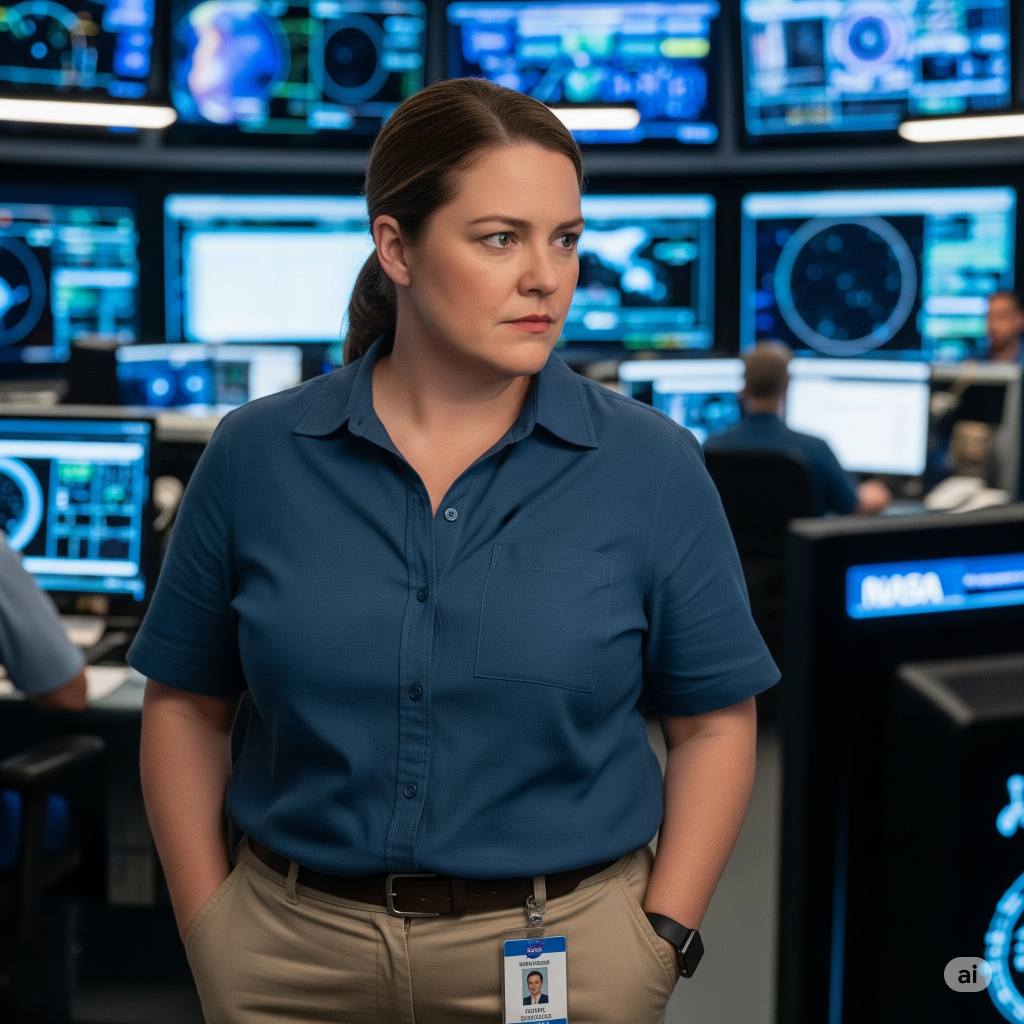
Barbara Goodwin
Barbara, Joan’s younger sister, plays a key role in Joan’s emotional life. Wild and reckless, Barbara became a teen mother twice and now relies heavily on Joan for help with her daughter, Frances. She often puts herself in the role of a victim and reacts defensively when criticized. Despite her comfortable married life with a wealthy husband, her neglectful behavior, especially as a parent, shows that ambition without learning from mistakes can have negative results.
Frances Goodwin
Frances, Barbara’s daughter, is six years old when the story starts and grows slightly older by the end. She is smart, friendly, and mature for her age. Frances admires Joan and dreams of becoming an astronaut. Although she senses her mother does not fully love her, Frances demonstrates resilience and a growing desire for a family where she feels truly needed.
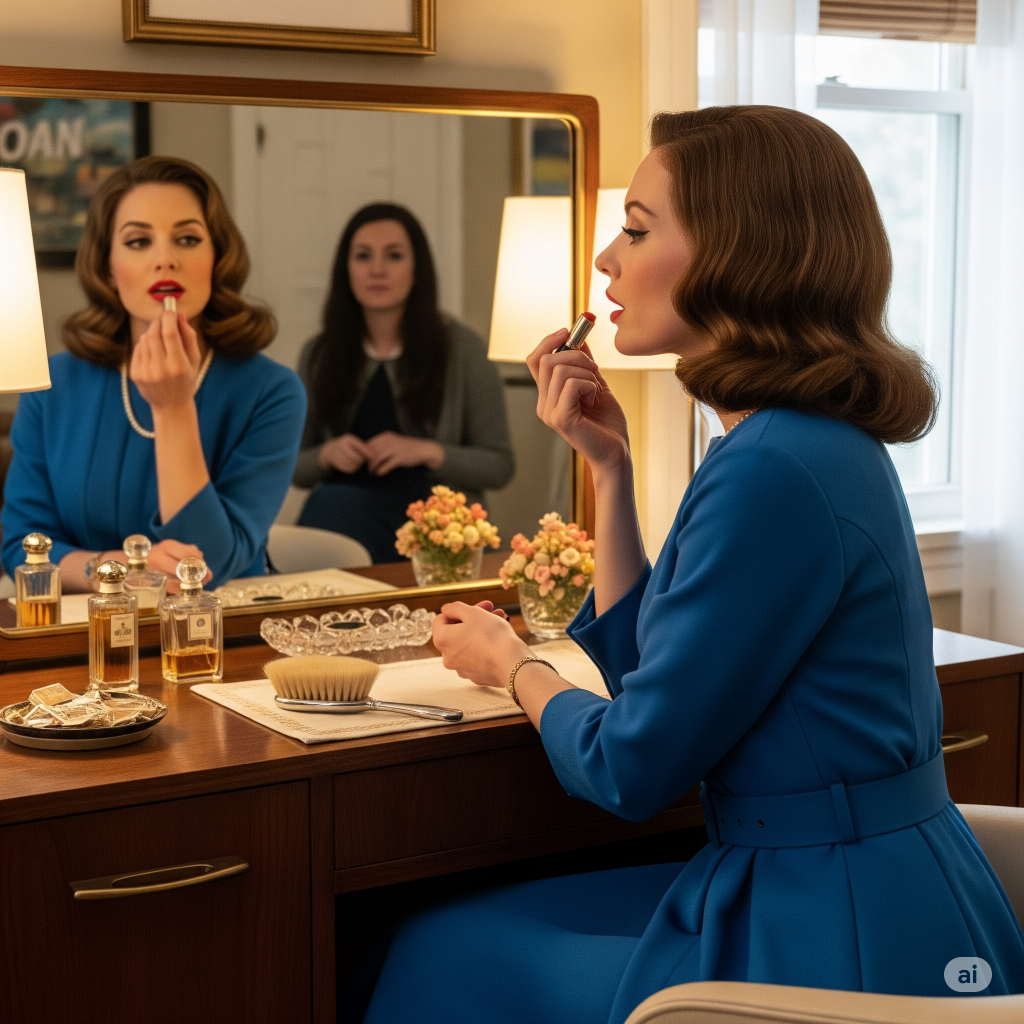
Vanessa Ford
Vanessa becomes Joan’s love interest and plays a major role in some chapters. A commercial pilot and aeronautics engineer, she fights against the rule that only military pilots (men) can fly NASA shuttles. Vanessa’s difficult past, including the loss of her military pilot father, led her to seek thrills and eventually find peace in flying. Unlike Joan, Vanessa is open about her sexuality, which creates tension when Joan is unaware of her true feelings. When their relationship is exposed, Vanessa chooses to follow her heart over her career dreams, marking a key change in her character.
Source: https://www.supersummary.com/

John “Griff” Griffin
Griff is one of Joan’s first astronaut friends. Coming from a strong academic and athletic background, he treats the women candidates with respect and often defends them against sexist remarks. Although he develops feelings for Joan, he accepts her lack of romantic interest and remains a trusted friend. Griff’s kind nature contrasts with other, less supportive candidates. His death during a crisis shows the deep bonds formed in the NASA community.
Donna Fitzgerald
Donna is another astronaut candidate who becomes a close friend of Joan. She is an emergency care physician. Donna starts a secret relationship with Hank, which later becomes public when they engage and have a daughter. Her relationship helps Joan see that love and marriage can add to one’s life rather than take away from it.
Lydia Danes
Lydia, a trauma surgeon and fellow astronaut candidate, is competitive and often rude. She sees herself as smarter and harder working than others and is upset when Joan is chosen for spaceflight over her. During a critical moment on the shuttle, Lydia learns through her near-death experience that teamwork is more important than individual ambition.
Hank Redman
Hank is a pilot known for his polite, Southern manners. He supports the women candidates and often helps Joan gain valuable flight experience. Hank marries Donna, and they have a daughter together. His respectful attitude stands in contrast to the more sexist views held by some other pilot candidates. Hank dies during the crisis on the shuttle.
Jimmy Hayman
Jimmy is a military pilot candidate who shows clear sexist attitudes. He criticizes Joan during a practice flight and uses crude jokes to undermine the women candidates. His behavior reflects a fear of vulnerability and a belief that showing kindness or fear is a weakness. Jimmy’s actions highlight the challenges the women face in a male-dominated program.
Source: https://www.supersummary.com/
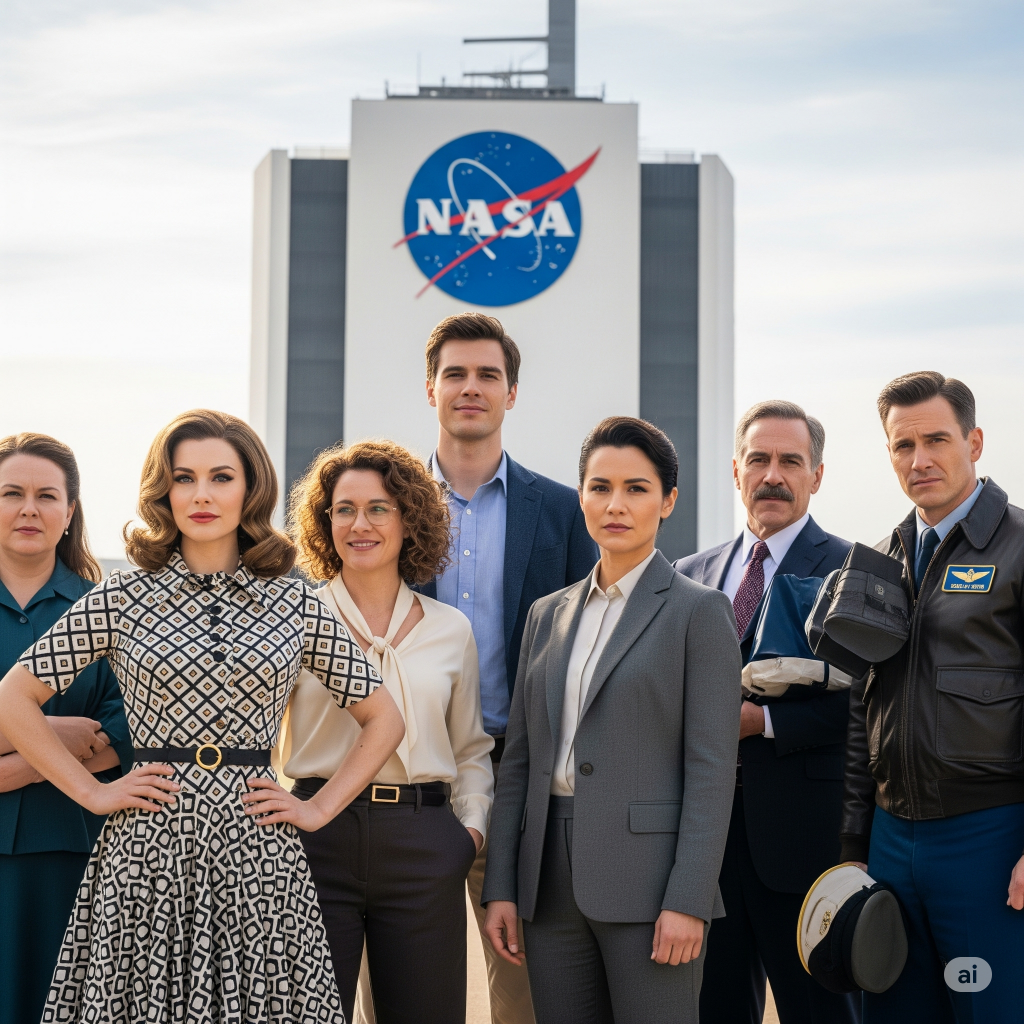
Symbols
Stars ⭐
are the novel’s primary symbol, reflecting Joan’s passion, ambition, and philosophy of human connection.
Ambition and Purpose: Stargazing, first sparked in Joan as a child at Joshua Tree National Park, ignited her ambition to become an astronomer and astronaut. The stars represent the long-thwarted goal that drives her application to NASA despite gender discrimination.
Interconnection: Stars symbolize the inherent connection between all things. Joan expands on this, arguing that looking at the night sky connects all humans across history and time. She theorizes that all matter, including humans, is made of the same basic elements as stars, meaning all life is fundamentally interconnected. This philosophy provides both Joan and Vanessa immense comfort.
Flight 🚀
is the primary symbol of Vanessa’s personal identity, hope, and peace.
Identity and Peace: For Vanessa, flying is a form of self-expression where she can “be [herself] in a way that [she’s] not sure [she] can be down there” on the ground. She credits her first flying lesson with giving her a sense of peace and purpose.
Hope for the Future: Flight represents the human ability to push past limits and achieve the impossible, a hope that drives her ambition to pilot the space shuttle despite NASA’s history of gender discrimination.
Legacy 🧭
is a motif exploring how people can “share something of the past with a person who could bring it further into the future”.
Positive and Personal: The small, personal legacy of the strawberry milkshake and PBJ sandwich combination that Vanessa shares with Joan and Frances is adopted by them, showing how traditions are carried forward. Steve’s statement that mentoring Vanessa is a proud part of his legacy becomes especially poignant when he dies during the shuttle crisis.
Gender and History: Legacy is tightly bound to the theme of Navigating Gender and Sexuality Discrimination. Joan hopes her ambition will create a positive legacy, making it easier for future generations of girls to aspire to be astronauts. However, this is balanced by the fear that any failure by the women in the program could create a negative legacy, reinforcing stereotypes and narrowing the aspirations of young girls. The motif encourages conscious reflection on the impact—both positive and negative, intentional and accidental—that one leaves behind.
The Amalfi Curse
You May Also Like

The Retreat – A vacation to Die for
May 11, 2023
The Henna Artist
May 11, 2023

